Etihad Rail: 10 raily exciting facts about the train linking the seven emirates
Just call us the ‘FAQ controller’…
Knowing facts about trains never used to be cool. In fact the term ‘train spotter’ was considered a cutting schoolyard slur until fairly recently. But then the arch-duke of train fancying, Francis Bourgeois came along and through the power of TikTok and purity of message, changed public perceptions on train facts forever.
There’s also something enduringly romantic about the idea of rail travel. Getting your ticket punched and powering through grand panoramic vistas, the rhythmic sway of carriages gently rocking you towards your final destination. Maybe there’s ‘an incident’ and a mustached Belgian will have to eliminate potential culprits one-by-one, using wild leaps of deduction. It’s a first class way to travel, is what we’re saying, even if you’re in coach.
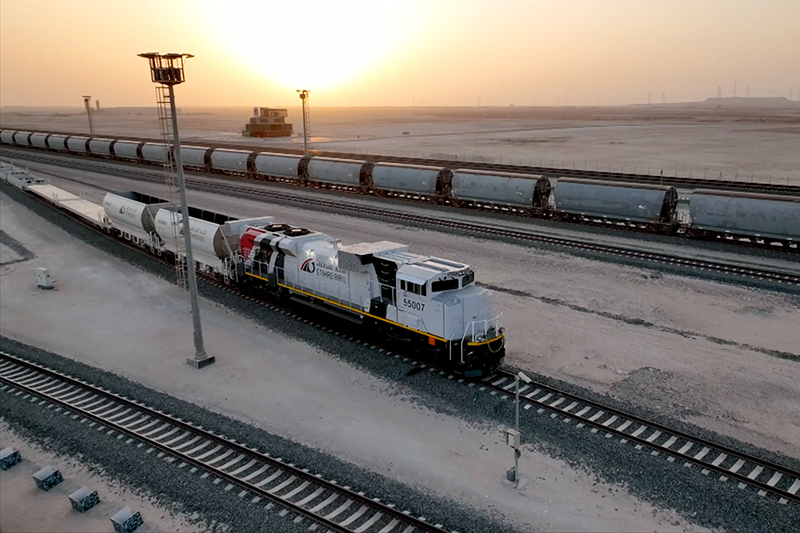
And if you are curious about what the UAE’s own Etihad Rail project will mean for travel in the region *twiddles mustache*, you ‘ave come to ze right place. Here are answers to 10 of the most commonly posed questions about the train that will link the seven emirates of the UAE.
So will it be for passengers or just for cargo?
There are two elements to the Etihad Rail Project — the rail network has been designed to support both freight and passenger services. There’s the massive commercial-industrial component, one that has in fact already begun with the transport of granulated sulphur in the west of Abu Dhabi.
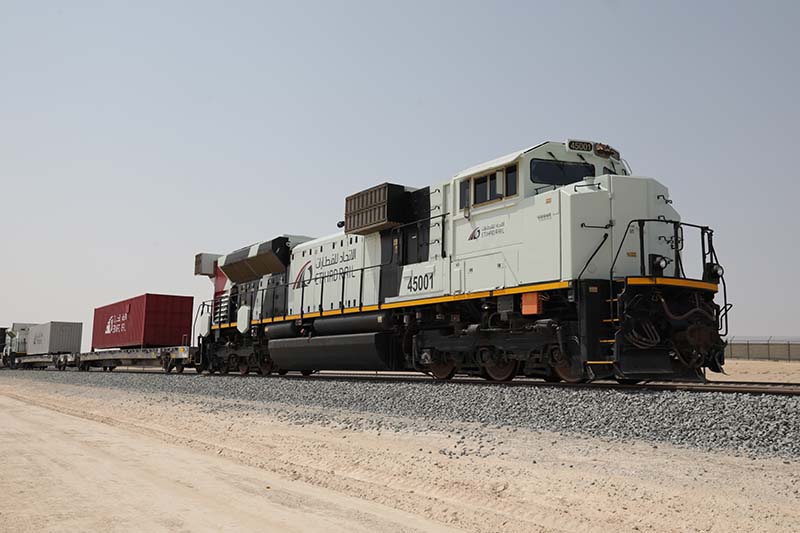
But there will also be a passenger transit system, a glorious ‘Sandpiercer’ linking 11 cities in the UAE, with oil painting backdrops of untamable geography slipping past the panoramic windows. And then… beyond. Into the GCC.
Are we nearly there yet?
Yes and no. On February 23, 2023, in the company of His Highness Sheikh Mohammed bin Rashid Al Maktoum, ruler of Dubai, vice president and prime minister of the UAE, the National Rail Network officially began operations for freight trains. But passenger operations might take a little longer.
When can we expect to sit on board?
When will passengers be able to ride on Etihad Rail? We know you’re keen for the cries of “tickets please” but they’re not quite due at the platform yet. The only rigid timeline that’s been put down officially is that the expectation is the service will be carrying an estimated “36.5 million passengers by 2030”, announced at a special ‘Projects of the 50’ event held at Expo2020 in December 2021. And that progress for this target is, rather appropriately ‘on track’. We been treated to a glimpse of what the trains will look like though. For the UAE’s National Day in 2022, a prototype was unveiled, and since then several high profile visits have been made to the functioning mock-up, including some royal visitors.
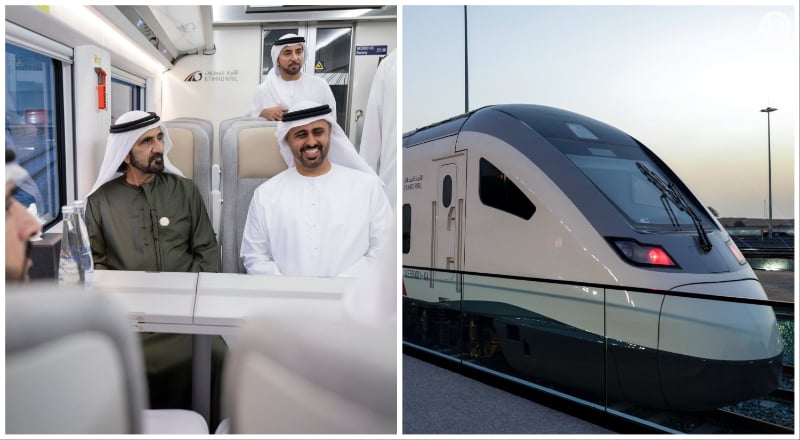
How quickly will it get me from Dubai to Abu Dhabi (or vice versa)?
When What’s On spoke to Ahmed Al Musawa, CEO of Oman & Etihad Rail Co pertaining to travel time between the emirates, here’s what he said
Ahmed Al Musawa: Train passenger services will enable users to plan their journeys between the emirates and cities more efficiently, significantly decreasing the travel time:
- Traveling from Abu Dhabi to Dubai will take up to 50 minutes
- Traveling from Abu Dhabi to Fujairah will take 100 minutes
- Traveling from Dubai to Fujairah will take 50 minutes.
- Traveling from Abu Dhabi To Ruwais will take 70 minutes
Which cities will it link?
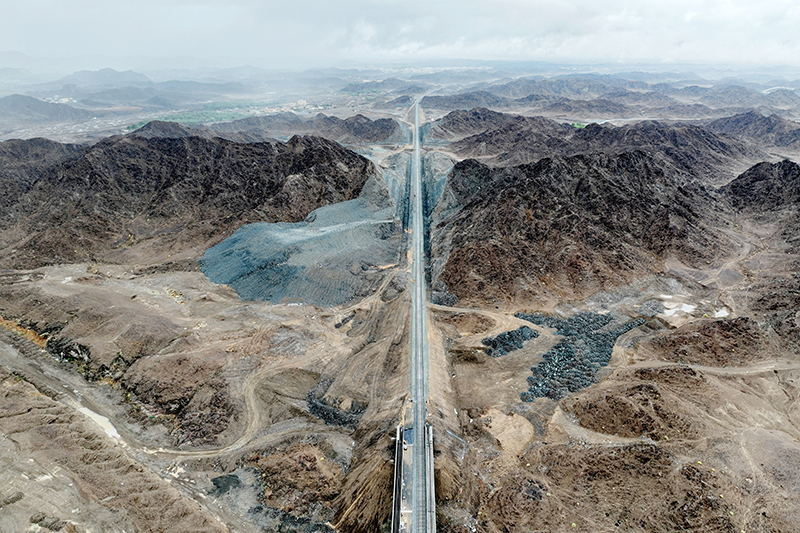
default
Al Musawa also said that the 1,200 km network will extend from Al Sila to Fujairah, Serving 11 cities, towns and communities around the network, including: Ruwais, Al Mirfa, Fujairah, Sharjah, Al Dhaid, Abu Dhabi.
Is it just the UAE?
No sir. Not at all. In february 2023, Oman Rail and Etihad Rail struck an accord, partnering with Mubadala and committing to a 303km stretch of track that will unite the two GCC nations by rail, direct from Sohar in Oman to the city of Abu Dhabi (in 100 minutes) and beyond.
There has also been talk of potentially connecting the UAE rail services with Saudi Arabia. Keep your eyes peeled for more updates on that.
How fast will it travel?
The train has been reported to top out at more than 200km/h. That’s “late for an appointment” Nissan Patrol speeds.
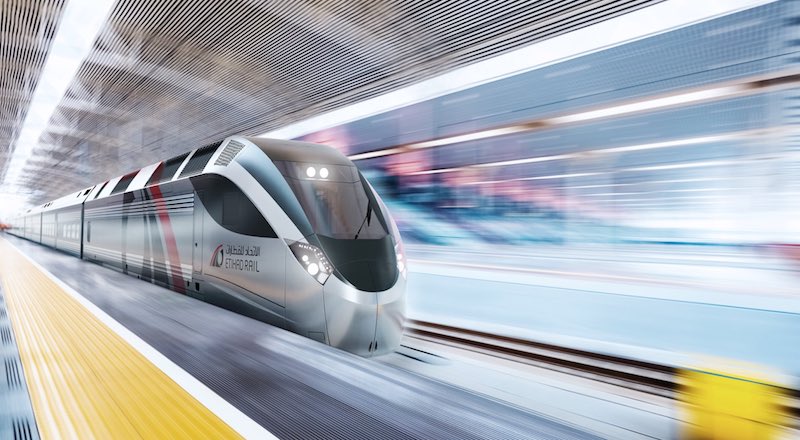
How environmentally friendly is it?
There’s a section of the track between shah andHabshan, and the port of Ruwais in the Al Dhafra Region of Abu Dhabi, that’s already in use for the transport of sulphur. Glamorous? Not really. Perfumed by the aroma of expired egg cress sandwiches? Almost certainly. But ferrying this vital industrial resoucre by rail rather than road has already saved two million truck trips.
And what about the desert wildlife?
Etihad Rail has key partnerships with the Department of Culture and Tourism — Abu Dhabi (DCT Abu Dhabi) and the Environment Agency – Abu Dhabi (EAD) to help ensure minimal wildlife and heritage disruption occurs from the track’s construction.
The Al Maha Forest area for example is home to a number of important species in the UAE, including the Arabian oryx, antelopes and bustard birds. Located in Abu Dhabi, the forest stretches over 5.5km alongside the Package B route and will hopefully afford some incredible animal spotting opportunities along the way.
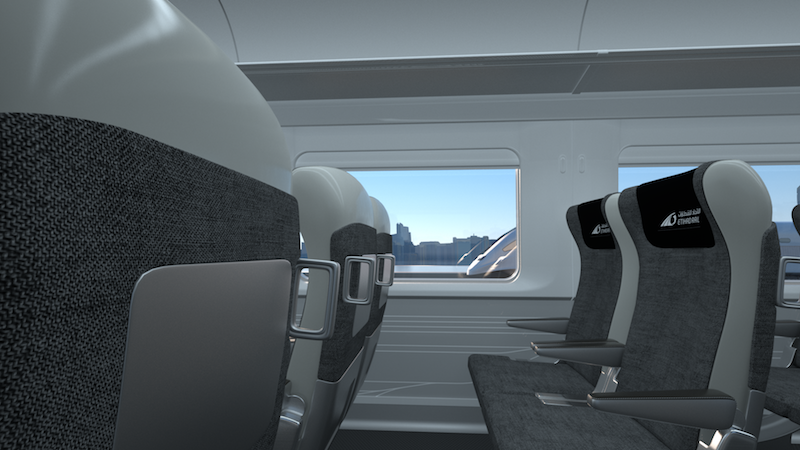
Etihad Rail avoids crossing breedings sites; it uses noise control tech to limit sound levels, and has committed to only using the horn in emergencies; there’s a vegetation replanting scheme; the track is lined with special fencing and has made provision for 10 camel underpasses, 22 gazelle underpasses and 78 reptile underpasses so far; the locomotives also conform to Tier 3 (EPA) engine emission levels, which is a good thing for everyone.
What are the major economic benefits
You hear a lot of chatter about numbers in mega projects. They’re all projections of course, but they’re attained through first principle science. Some of the most exciting statistics to come out of the Etihad Rail station are that it will create ‘economic opportunities’ to the value of around Dhs200 billion; the estimated benefits of reducing carbon emissions amount to 21 billion and road maintenance savings of Dhs8 billion have been forecast; then of course there’s the extra tourism business valued at a conservative Dhs23 billion over the next 50 years; and the public spending benefits on the UAE economy will reach Dhs23 billion.
Images: Etihad Rail
